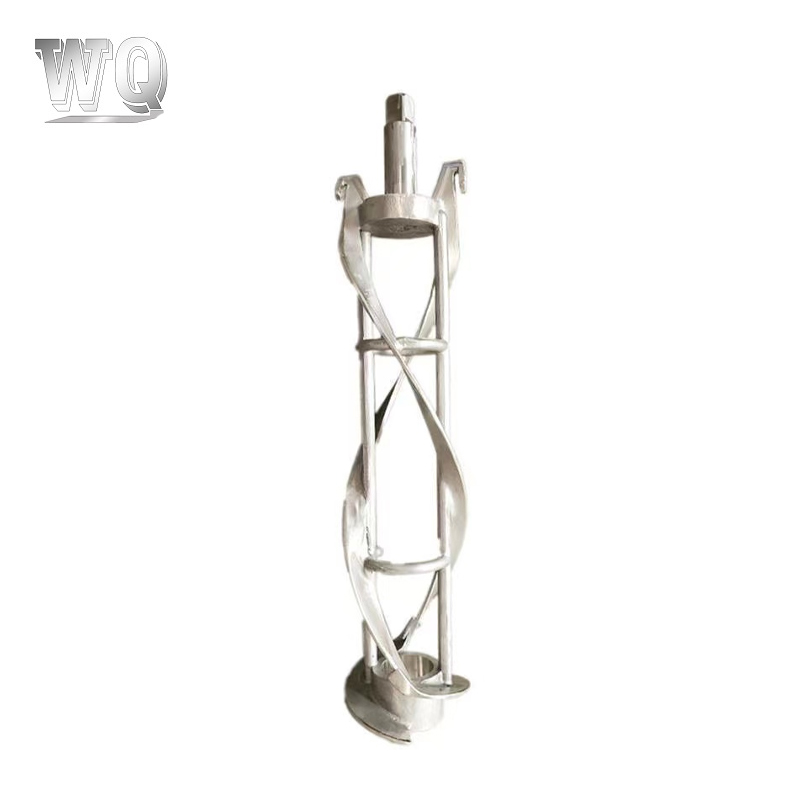The performance of Ice Cream Machine Parts in high or low temperature environments is a key issue, as these environments may have a significant impact on material properties, mechanical properties, and functionality. The following is a detailed analysis of the specific performance, potential issues, and optimization measures under different environmental conditions:
1. Performance in high temperature environments
(1) Impact of material properties
Metal materials:
Stainless steel: Stainless steel has good high temperature resistance and can still maintain high strength and corrosion resistance at high temperatures. It is suitable for key parts of ice cream machines (such as stirring paddles and condensers).
Aluminum alloy: Aluminum alloy may soften at high temperatures, resulting in a decrease in mechanical strength, but its excellent thermal conductivity makes it suitable for heat exchange components.
Plastic materials:
Food-grade plastics (such as PP and PE) may deform or release harmful substances (such as plasticizers) at high temperatures, so they are only suitable for medium and low temperature environments.
(2) Performance of key components
Compressor and condenser: In high temperature environments, the compressor's workload increases, which may lead to a decrease in cooling efficiency. The condenser requires higher heat dissipation capacity to maintain performance.
Seals: High temperatures may cause rubber or silicone seals to age or harden, thereby reducing sealing performance and causing air or water leakage.
Agitator: If the agitator material is not resistant to high temperatures, it may deform or wear due to long-term operation, affecting the uniformity of mixing.
(3) Potential problems
Thermal expansion: Metal parts may expand thermally at high temperatures, causing changes in assembly gaps or parts jamming.
Lubrication failure: High temperatures may cause lubricants to deteriorate, increase friction and accelerate component wear.
Hygiene issues: High temperatures may accelerate the carbonization of grease and residues, affecting cleaning effects and food safety.
(4) Optimization measures
Use high-temperature resistant materials (such as 304 or 316 stainless steel) to manufacture key components.
Add cooling systems or heat dissipation devices to reduce the operating temperature of accessories.
Regularly check and replace seals, lubricants and other vulnerable parts.
2. Performance in low temperature environment
(1) Influence of material properties
Metal materials:
Stainless steel: Stainless steel still has good toughness and corrosion resistance at low temperatures, but it may be at risk of increased brittleness under extremely low temperature conditions (such as below -40°C).
Aluminum alloy: Aluminum alloy becomes more brittle and prone to fracture at low temperatures.
Plastic materials:
Food-grade plastics may become hard and brittle at low temperatures, causing parts to crack or break.
(2) Performance of key components
Freezer and discharge port: In low temperature environments, the freezer needs to ensure efficient refrigeration, while the discharge port may be blocked or stuck due to ice.
Agitator: Low temperature may cause frost on the surface of the agitator, increase operating resistance, and affect agitation efficiency.
Seals: Low temperature may cause rubber or silicone seals to harden and lose elasticity, thereby reducing sealing performance.
(3) Potential problems
Increased brittleness: Low temperature may cause certain metal or plastic parts to become brittle and prone to fracture.
Ice blockage: Ice may form in the freezer or outlet due to condensation of water, affecting the normal operation of the equipment.
Lubrication failure: Low temperature may increase the viscosity of the lubricating oil, reduce fluidity and increase friction.
(4) Optimization measures
Use materials with good low-temperature toughness (such as special alloy steel or flexible silicone) to manufacture key components.
Add antifreeze coating or heating device to prevent ice formation or freezing of components.
Clean the freezer and outlet regularly to avoid ice accumulation.
3. Impact of temperature difference changes
(1) Thermal expansion and contraction
Temperature difference changes may cause metal or plastic parts to expand and contract, which may lead to loose assembly, seal failure or component deformation.
Solution: Use materials with low thermal expansion coefficient (such as ceramic composites) or design compensating structures (such as elastic connectors).
(2) Stress concentration
Frequent temperature difference changes may cause stress concentration, accelerating component fatigue or cracking.
Solution: Improve the fatigue resistance of components through heat treatment or surface strengthening processes.
In high or low temperature environments, the performance of Ice Cream Machine Parts is greatly affected by material properties, design process and usage conditions. By choosing the right method, the reliability and service life of accessories in extreme environments can be effectively improved.









